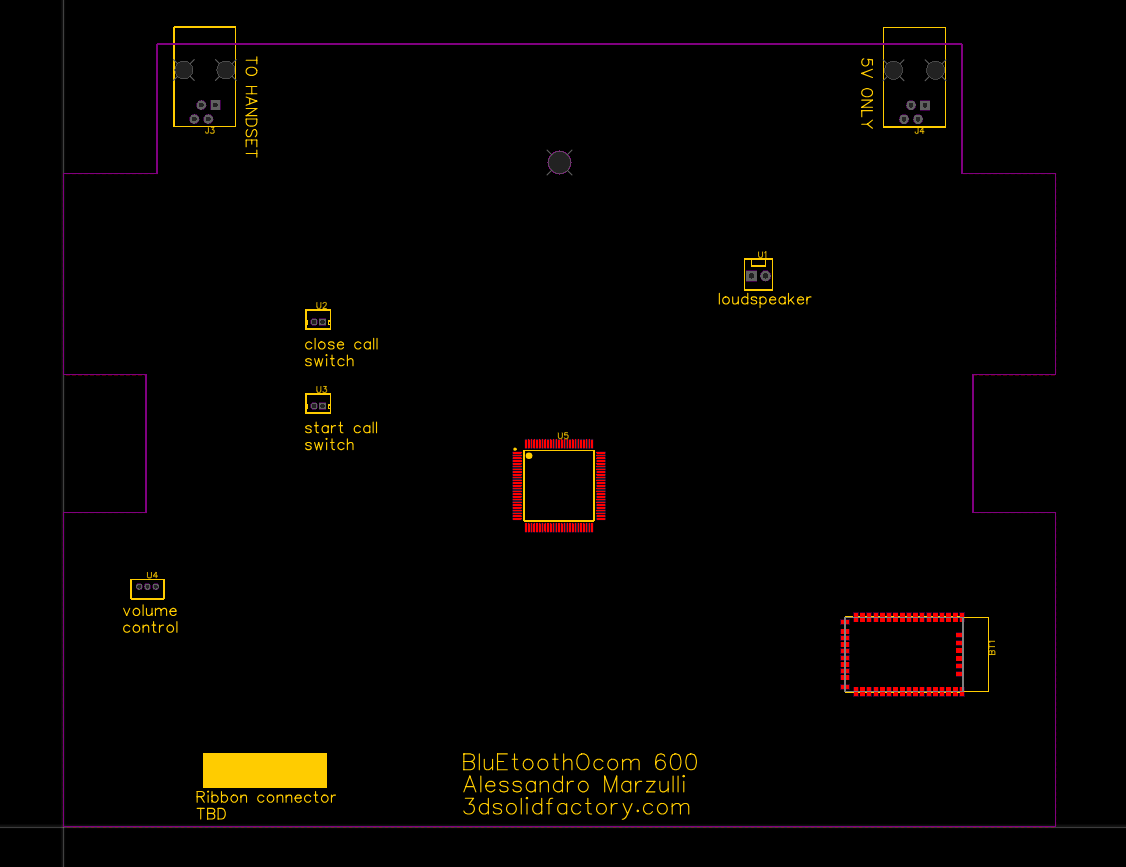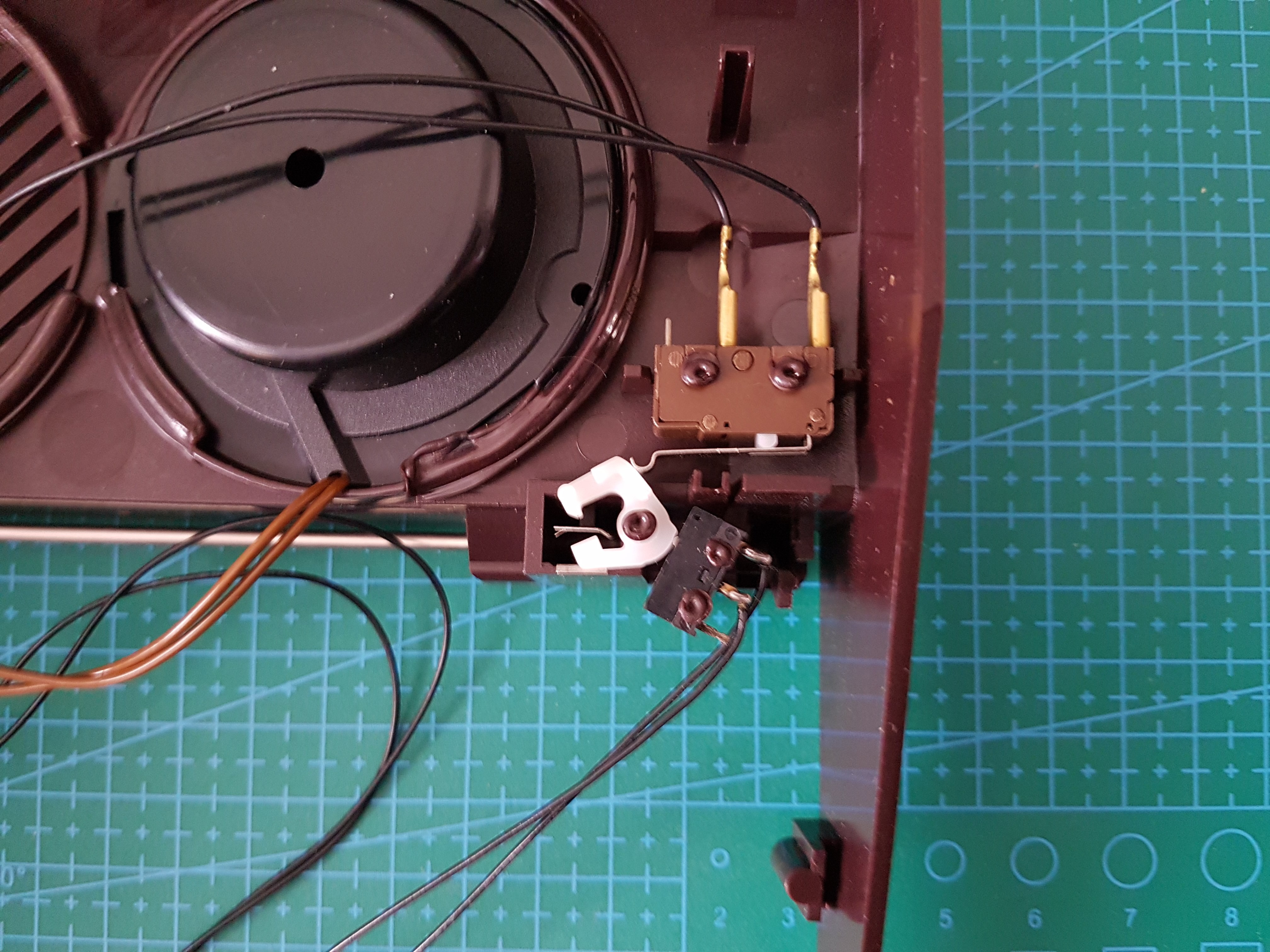BluEtoothOcom 600
A bluetooth enabled Beocom 600
Giving a new purpose to a beautiful piece of equipment
A bluetooth enabled Beocom 600
Giving a new purpose to a beautiful piece of equipment
To make the experience fit your profile, pick a username and tell us what interests you.
We found and based on your interests.
Keypad Matrix documentation.pdnpdn - 25.21 MB - 05/02/2019 at 21:21 |
|
I had my time completely occupied by lectures and exam, but today i finally found some time to continue from where I left off: understanding how the keypad works.
Due to the age of the device, I wasn't able to get any output from the keypad, and the metallib back panel was held tight to the body of the device by some plastic pegs (which were still part of the body) molten and pressed tight against the back pane.
Clearly, getting access to the inside would be a destructive endeavour, right?
Well that's what I thought, but by heating the tip of a needlenose plier, I was able to elongate those molten rivets back into the original shape (mostly).
[There should be a photo here, but I totally forgot to take one before hand]
After prying the metal backplate, I was able to finally get access to the rubber membrane and the flexible PCB.
I then proceeded to scan that circuitboard with my printer and this is the result
All I had to do then, was tracing by hand all the trace with different colours, which took almost 3 hours (trust me, the design is really convoluted on this one).
I've published a .pdn file (compatible with the Paint.net software) with all the individual traces, color coded and divided in layers.
Here's a table with the button and their corresponding pin on the connector, nubmered 1 to 13 from left to right:
| 1 [4 , 7] | 2 [4 , 8] | 3 [4 , 9] | R [2 , 7] |
| 4 [5 , 7] | 5 [5 , 8] | 6 [5 , 9] | Mute [1 , 10] |
| 7 [6 , 7] | 8 [7 , 8] | 9 [8 , 9] | Enter [4 , 11] |
| * [3 , 7] | 0 [3 , 8] | # [3 , 9] | Memory [5 , 12] |
| M1 [4 , 13] | M2 [4 , 12] | M3 [5 , 13] | Redial [2 , 9] |
The weirdness of this keypad matrix knows no bounds.
I've looked at this nice keypad matrix decoder IC from Texas Instruments, but i'm thinking about making my own with an atmega of some sort because of the pin arrangement.
After cleaning the contacts, both on the flex and on the rubber pad to improve conductivity, the only thing I had to do was putting everything back the way it shound and then riveting back the back panel by heating the tip of a flat screwdriver and compressing these plastic pins.
Here it is, like new...
After long study nights and exhausting exam sessions, I finally found some time to get started on the attempt to design the PCB from scratch.
The original PCB from Bang & Olufsen is a beautiful single layer board with no SMD parts whatsoever.
My board is not working, and on top of that, the backup AA battery went off a long time ago, and as a result, the bottom part of the PCB is corroded as well.
As you can see, there are two switches on the top. On a sticker on the bottom of the phone, the right one has 3 states, labeld from two to zero, and the right one has two states: IWV and MFW
Needless to say, I have no idea what those switches do.

The MCU can be then programmed to use both of those switches to start and end a phone call.
Here's a picture, so you can see the white lever pushing on only one swith at a time (As you can see, almost everything is welded to the chassis itself, rendering any attempt of further teardown destructive.)
(As you can see, almost everything is welded to the chassis itself, rendering any attempt of further teardown destructive.)
The only big problem though, is the keypad ribbon connector.
I am trying to figure out what kind of microcontroller (or even SBC) to use to make this project a reality.
I was really inclined to base this project around an RN52 bluetooth module, but due to the (relatively) high price, I'm looking for another candidate (maybe an ESP32?)
If you have any ideas, please feel free to leave a comment, I do really appreciate any help :)
The main scope of this proejct is to:
These are the minimum functionalities I want the replacement PCB to perform to make the project a success.
Other thing that would be nice to implement would be:
Create an account to leave a comment. Already have an account? Log In.
Become a member to follow this project and never miss any updates